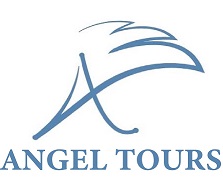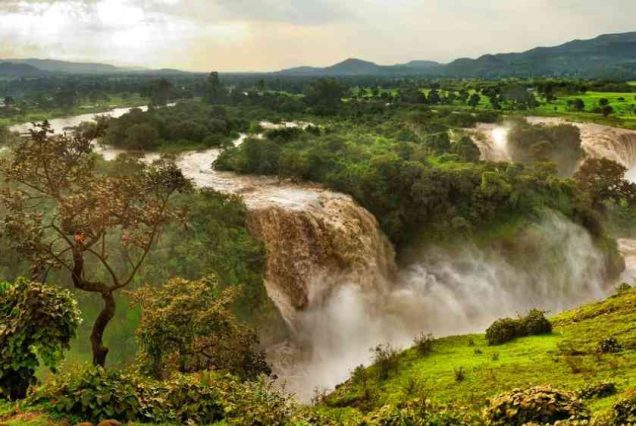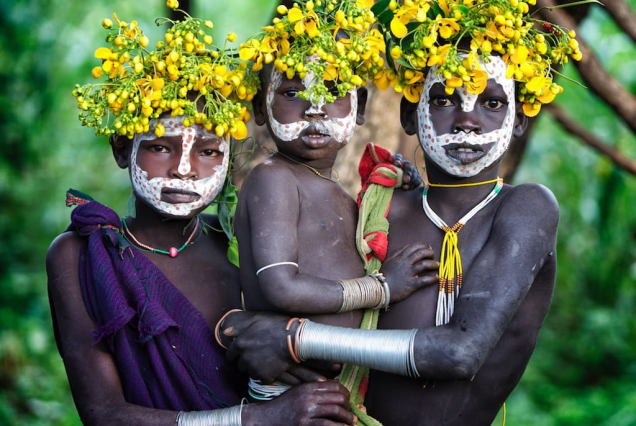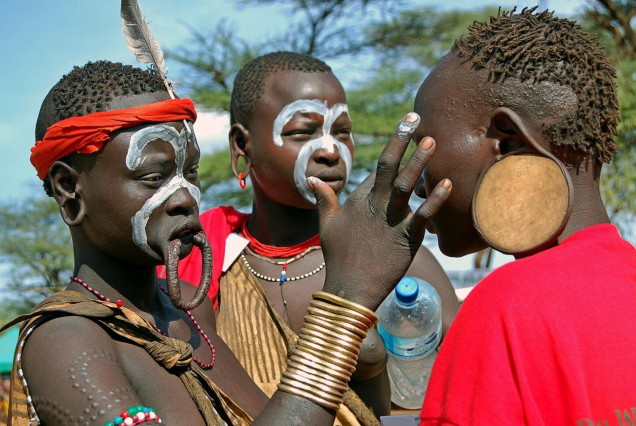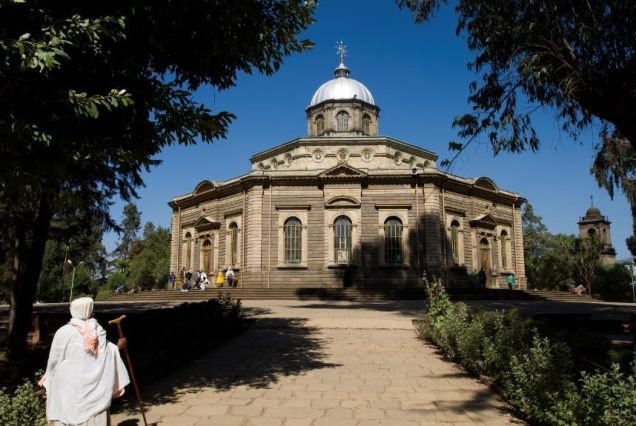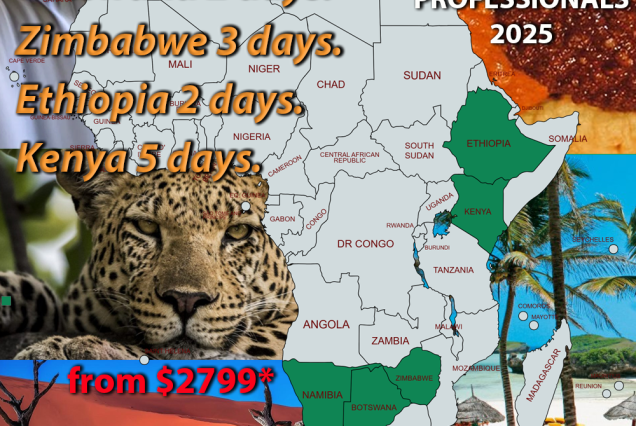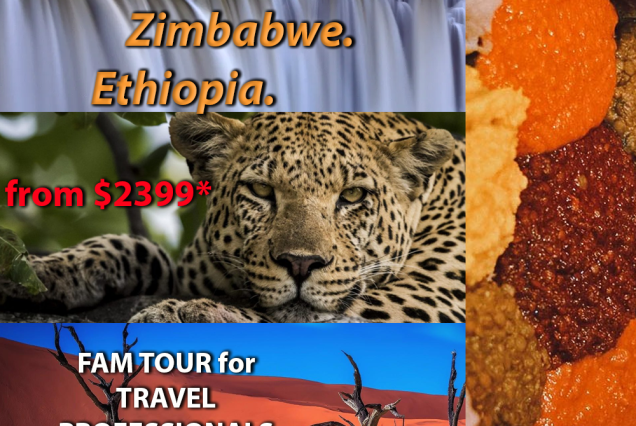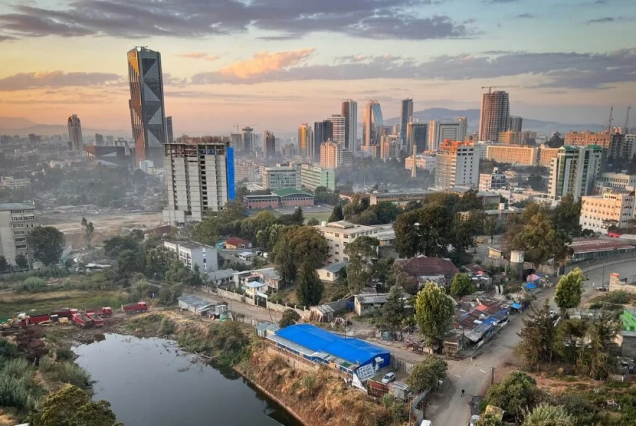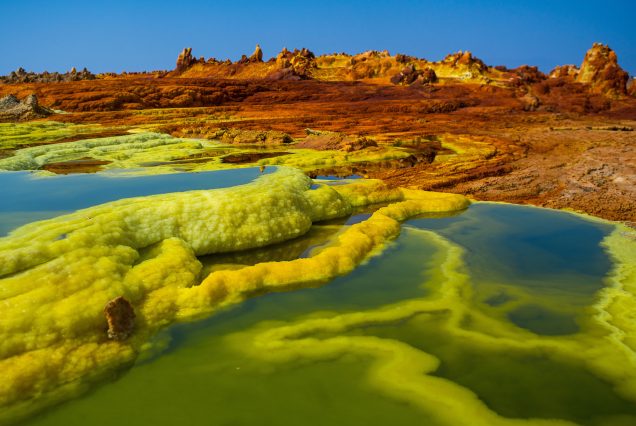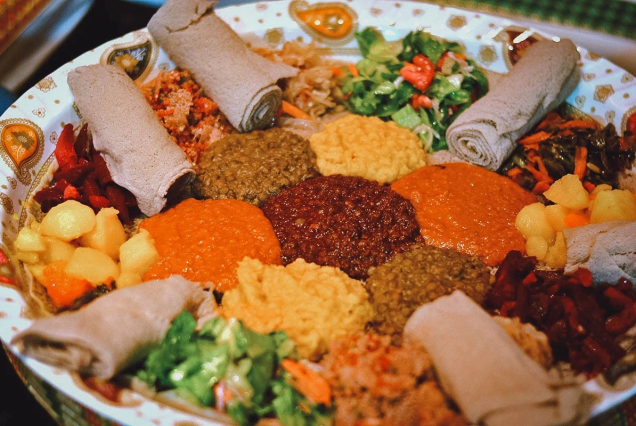Ethiopia. The Fascinating Omo Valley Tribes. 9 Days.
Addis Ababa is the largest city of Ethiopia and its capital city at the same time. Addis Ababa, which in Amharic means “a new flower”, is located in the center of the country, 2100- 2300m above the sea. It is one of the highest-located capital cities in the world. Here you can do various activities depending on your available time.
Discover the incredible number of different ethnic groups in and around the Omo Valley. Explore their villages, learn about local customs and wander through bustling markets on a specific day of the week as listed below.
Monday – Kako Market at Jinka or Turmi Market at Turmi village
Tuesday- Dimeka Market at Turmi village / Dorze market at Chencha
Wednesday-Thursday – Key Afer Market at Key Afer village
Friday – Saturday – Dimeka Market at Turmi village / / Dorze market at Chencha
Sunday – Weito Market at Erbore village.
Visitors with an interest in observing pre-materialist cultures or in anthropology will find much to fascinate them in the different ethnic groups situated along the Omo River, with marvelous scenery, wild life and bird life as an added bonus.
Along the Omo River a variety of different ethnic groups are found, such as the Tsemay, Arbore, Hamer, Galeb(Dasenech), Karo, Benna, Ari, and Mursi, Bume(Nyangatom), Bodi, Surma, whose contact with the modern world has come only within the last two to three ecades. The Omo, flowing for nearly 1000 km from the highlands south west of Addis Ababa to Lake Turkana in Kenya, provides excellent opportunities for white water rafting.
Visit the local villages, meet with elders …
Involve with everyday tasks such as farming, weaving, food preparation, hunting, gathering ect.
BAGGAGE ALLOWANCE
Domestic Flights: A strict luggage restriction of 20kgs per person and hand luggage, applies to all light aircraft flights within Ethiopia. It is important that you carry soft-sided or “barrel” bags, as hard-sided suitcases (Samsonite-style) cannot be fitted into the small holds of light aircraft if you use the charter flights on this program.
Excess Baggage: Excess baggage may be safely stored at hotel in Addis Ababa.
| DBL SHA | 3* BB | 3*HB | 3*FB | 4* BB | 4*HB | 4*FB | 5* BB | 5*HB | 5*FB |
|---|---|---|---|---|---|---|---|---|---|
| 2 pax | 2570 | 2660 | 2750 | 2710 | 2800 | 2890 | 3360 | 3450 | 3540 |
| 3 pax | 2160 | 2250 | 2340 | 2310 | 2400 | 2490 | 2960 | 3050 | 3140 |
| 4 pax | 2240 | 2330 | 2420 | 2390 | 2480 | 2570 | 3040 | 3130 | 3220 |
| 5 pax | 2070 | 2160 | 2250 | 2219 | 2309 | 2399 | 2870 | 2960 | 3050 |
| 10 pax | 1850 | 1940 | 2030 | 1999 | 2089 | 2179 | 2650 | 2740 | 2830 |
Included/Excluded
- All accommodation as detailed with a room sharing & private facilities on the chosen meal plan
- Airport welcome and transfer to the hotel
- Cultural activities mentioned in day by day
- All entrance fees as per the program
- Other activities Coffee ceremony, and Honey wine drinks (Tej)
- Traditional farewell Dinner in Addis Ababa
- Ethiopian Visa fee
- International and domestic flights
- Tour Leader Charge and Gratitude
- Personal expenses
- Personal insurance
- Excess baggage charge
Tour Plan
Addis Ababa is the largest city of Ethiopia and its capital city at the same time. Addis Ababa, which in Amharic means “a new flower”, is located in the center of the country, 2100- 2300m above the sea. It is one of the highest-located capital cities in the world. Addis Ababa is a pleasant city with interesting museums and one of the largest open-air markets in Africa, “Mercato”.
Addis Ababa is Africa’s diplomatic capital with headquarters for the Organization of African Unity and the United Nation Economic Commissions for Africa.
On your arrival at Addis Ababa Bole International Airport, after clearing immigration and customs welcome by your guide and get transferred to your hotel.
Depending on your arrival time it is possible to arrange sightseeing in Addis Ababa with a national guide and this includes;
A visit of the National Archaeological Museum; ranks among the most important museums in sub- Sahara Africa. It housed the 3.5 million-year-old bones of Lucy. Lucy is believed to be the ancestor of all Humankind. It has lots of ancient exhibits that reflect the importance of Ethiopia as the „Cradle of Mankind‟. Its historic room features finery worn in the wars, such as crowns, weapons, and pictures of wartime heroes and kings.
Visit St. George‟s Cathedral (Giorgis Cathedral) which lies at the north end of Churchill Rd. Designed in the traditional octagonal shape, this cathedral was built in 1896 to commemorate Ethiopia’s victory over the Italians at the Battle of Adwa. The Cathedral houses the work of Afewerk Tekle, the renowned Ethiopian artist responsible for the stained glass windows of the Africa Hall and also houses a small museum in the compound.
And a visit of Merkato; the Largest open Market in Africa; where virtually every possible commodity is on sale, from livestock to computers. It is closed on Sundays & for a visitor good at bargaining, there is a huge selection of Ethiopian arts and crafts.
Accommodation: Best Western Plus Addis Ababa Hotel/Hyatt Regency Addis Ababa Hotel/ Sheraton Addis Luxury Collection
Early Morning, drive to Arba Minch via Lake Ziway, Lake Langano, Shashemene & Sodo towns. Arba Minch is the home of two Ethiopias largest Rift Valley lakes, beautiful landscape (God’s Bridge), forty (40) springs Nechisar National Park, crocodile ranches, crocodiles market and the highland of Dorze village on its doorstep. The city is also a gateway to the Omo valley and Konso on the Southern circuit. It is one of the best destinations in Ethiopia.
Total driving distance 475kms/7hrs.
Kindly note that you can also have a flight option if you intended to fly, ET 171 @0740-0845am
Accommodation: Haile Resorts 4* / Paradise lodge 3*/ Emerald Hotel 3*
Full day in Arba Minch. Following breakfast visit the home of the Dorze people at Chencha, 40kms from the city. The Dorze are renowned cotton weavers whose tall beehive-shaped dwellings are among the most distinctive traditional structures to be seen anywhere in Africa.
The main occupations of the region are subsistence farming and weaving. The Shama cloth produced around Chencha is regarded to be the finest in Ethiopia: Plain white Gabbi robes and brightly colored scarf-like Netalas are sold along the roadside. Explore the local Dorze market decorated with many colors.
In the afternoon, enjoy the boat trip on Lake Chamo – one of the best features of the park. Attraction of the boat trip includes viewing of large number of hippos and crocodiles from a very close range. There is a good place to watch large number of crocodiles on the shore of Lake Chamo. The place known as “Azo-Gebeya” meaning Crocodile Market offers one of Africa’s most impressive displays of big crocks.
Accommodation: Haile Resorts 4* / Paradise lodge 3*/ Emerald Hotel 3*
Make a drive through the Konso village; whose people are known for their intricately terraced hillsides, they make recognized and prized by UNESCO, fine woven materials and the carved totems with which they decorate their graves.
On the way stop and visit Konso Cultural Community. The rolling hills of Ethiopia‟s Southern Rift Valley, dotted with bright green moringa trees and quaint thatched huts, are home to the Konso people – traditional farmers who cultivate cereals and cotton and rear cows and goats.
The vast and majestic landscape provides a stunning backdrop for the unique Konso culture.
Konso villages, known as kantas, are built into the hillsides and encircled with stone walls for protection. The winding paths that weave through the village all lead to the mora, a large, thatched pavilion which acts as a special meeting place for the people of the surrounding villages. At night the young, unmarried men sleep here to protect the community and learn about life.
The Konso culture has much to offer visitors. From cultural performances to handcraft demonstrations, visitors can learn about the traditions of the Konso people and the important roles these traditions still play in their lives.
Continue your journey to Jinka & after check-in to your hotel visit the local villages in Jinka and get acquainted to the local life, how they make local liquor made of Sorghum, Garlic and maize and how they make a pot.
Total driving distance 270kms/4hrs.
Accommodation: Eco Omo Lodge/Jinka resort /NASA Hotel
Mago National Park, one of Africa’s vast wildernesses, was founded in the 1960s and it encloses dense acacia forests and open savannah. Drive to visit the Mursi villages; they go in for body scarification and among the women the wearing of lip plates. They are known for fierce warrior disposition and wildly decorative appearance, with large circular clay labrets that the women wear in the lower lip. Turmi is a place for the Hamer tribes, visit the Hamer village they are a fine looking people, both men and women take great pride in their appearance, shaving and coloring their hair, oiling their bodies and decorating themselves with beads and bracelets worn around arms and legs. They are famous for their body decoration, moonlight dance (Evangedi Dance) and bull-jumping. Bull jumping marks the rite of passage from childhood to adulthood. It is not a done every day. If Tuesday or Thursday attend the beautiful Omo Valley market on the way to Turmi – the best colorful ones in the Omo Valley Markets.
Total driving distance 230kms/6-7hrs.
Accommodation: Paradise Lodge/ Turmi Lodge
Following your early breakfast and holding your picnic lunch; today drive and cross the Omo River to visit the Bumi tribe on the Side of the Omo Valley. The Bumis are great warriors. They are also specialized crocodile hunters using harpoons from a dugout canoe. Cross back to the Omo River and drive to the village of Kolcho and visit the Karo tribes. They are considered the masters of body painting, in which they engage when preparing for a dance, feast or celebration. Finally drive back to Turmi.
Total driving distance 150kms/3-4hrs.
Accommodation: Paradise Lodge Turmi/ Buska Lodge
Following breakfast drive to Erbore village to say hello to the beautiful women of Arbore tribe with their black veils, but are half nude and head shaved, so the contrast is really amazing. Arbore / Erbore, is far more rustic and unaffected than many similarly size towns in south Omo, in common with their linguistically and culturally affiliated Tsemai neighbors, the Arbore migrated to their present homeland from Konso perhaps two centuries ago. Because they have ancestral and cultural links to Konso and the pastoralists of the surrounding lowlands, the Arbore traditionally played an important role as middlemen in trade between the Omo River and the Konso Highlands.
The town of Arbore lies in an area where several tribal boundaries coverage.
Total driving distance 280kms/5-6hrs.
Accommodation: Haile Resorts / Paradise lodge /Emerald Hotel
Following breakfast, drive to Addis Ababa stopping on the way at the rift valleys and at Tiya prehistoric site, classified by UNESCO as a World Heritage Site, where you could see the northernmost example of a peculiar type of engraved, standing stellae which stretch across parts of southern Ethiopia. These stellae are believed to have been erected between the 12th and 14th centuries and are almost certainly grave markers – recent excavations at Tiya have revealed the remains of young people of both sexes, 18 – 30 years old and buried in foetal positions.
Tonight you will have a wonderful cultural evening at one of Addis Ababa Restaurant; Ethiopia is a mosaic of people with more than 80 languages, different lifestyles, costumes and cultural dances.
Take a chance to experience some of these cultural dances and traditional meals with a drink of Tej, a type of wine made from Honey.
Total driving distance 475kms/7hrs.
Accommodation: Sheraton Addis Luxury Collection/Hyatt Regency Addis Ababa Hotel/Best Western Plus Addis Ababa Hotel/ Bonanza Hotel
A Day in Addis, Visit to Entoto Hills – best introduction place to Addis Ababa. Mt. Entoto is the highest peak in Addis Ababa reaching 3,200 meters above sea level, giving the opportunity to catch stunning views over the city and the surrounding area from the summit.
It is the first settlement in Addis Ababa where Emperor Menelik II resided and built his palace in 1887. It is a historical place which offers a unique glimpse into the history of Ethiopia‟s distinct culture. The compound at the peak hosts the Entoto Mariam church, an Ethiopian artefact muse-um as well as Menelik II palace.
In addition to its historical significance as one drive up the hill there is an appreciable drop in temperature and the air is filled with the scent of the Eucalyptus trees which line the road.
On the way up the roadside stalls offers fresh Ethiopian coffee. Also, if you have an interest in Ethiopian traditional clothes stop by at Shero Meda Market. There is a wide variety of beautiful fabrics, shawls, scarves, dresses, tops and jewellery with lots of choice and really good for gift ideas.
Tonight you will have a wonderful cultural evening at one of Addis Ababa Restaurant; Ethiopia is a mosaic of people with more than 80 languages, different lifestyles, costumes and cultural dances. Take a chance to experience some of these cultural dances and traditional meals with a drink of Tej, a type of wine made from Honey.
Transfer to airport for the international flight registration.
